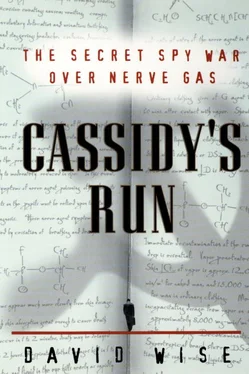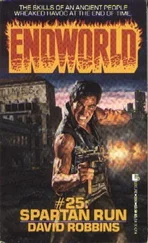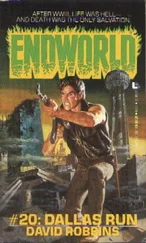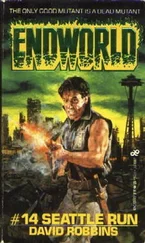“The army’s role was merely providing support,” Yoshihashi noted. “It was a bureau operation. I would get requests from Gene Peterson.
“The bureau would bring in documents from Edgewood and say can we release these? Gene or the bureau’s liaison agent would bring the documents over to the Pentagon. Then I would go to DCSOPS for approval. In some cases, I would make a recommendation that material should not be released. Most of the documents that we approved, except for the deception, were true information.”
Yoshihashi and Peterson, while responsible along with a few other officials for managing the operation, did not deal directly with Cassidy. That was the job of the case agents in the field. And during the deception phase of SHOCKER, that meant Jimmy Morrissey.
In the fall of 1964, a major shift of positions had occurred in the FBI’s Washington field office. Ludwig Oberndorf, the counterintelligence chief, was assigned to headquarters. Special Agent William J. Lander took over S-3, the GRU squad. At the same time, Donald Gruentzel, who had been Cassidy’s case agent, was promoted to supervisor of S-2, the KGB squad. It thus fell to Jimmy Morrissey to run Cassidy during the most sensitive phase of the operation.
In its finalform, the plan was, in a sense, a triple deception. “There were G-series gases up to letter H,” Yoshihashi said. “The deception was to say we now have GJ. It was fictitious.” Secondly, the claim of a new and powerful GJ nerve gas might lead Moscow to conclude, by implication, that the Edgewood scientists had also created a nerve gas labeled GI. The third aspect of the deception was that the bogus documents to be passed to Moscow by Cassidy were also to reveal that GJ existed in binary form.
The decision to tell the Soviet Union about a breakthrough nerve gas designated GJ had a grain of truth embedded within it, since the Edgewood scientists had in fact tried to do so and failed. The effort had taken place, but the results disclosed to the GRU were false.
Most former officials privy to the deception declined to discuss it. One ex-FBI agent familiar with Operation SHOCKER, however, agreed to talk about the deception, the most sensitive phase of the long-running case, on the condition that he not be named. “We had spent a lot of money, and we thought, hell, make them do it. It was hoped the operation would lead the Soviets in turn to spend time and resources on trying to develop the same weapons system, in binary form. It was a ‘we tried and couldn’t so let’s make them spend money on it’ attitude.”
The FBI’s files confirm this purpose. In December 1965, FBI headquarters informed the Washington field office that the deception operation had been authorized based on material developed by the army. The deception would involve a lethal chemical agent, many times more effective than any then available. For #8220;technical” reasons, it was said, the United States had decided not to deploy this weapon but would pass the information to the Soviet Union in a controlled manner. The objective was to cause the Soviets to conduct extensive research and to commit money, personnel, training, and material to replicate or defend against a chemical agent that the United States had not actually produced and therefore had no intention of using.
Another former FBI official, who also insisted on anonymity, was willing, cautiously, to describe the nerve gas that the Soviets were led to believe had been developed. “It was very unstable and could not be stored, so it could not be put in a weapon. It would not maintain its toxicity. And there was no antidote for it. So the idea was, we give it to the Soviets, they make it, and then discover it’s unstable and no antidote exists, so it can’t be used. Because how would they protect their own troops?”
Now the double-agent operation had escalated into a risky, highstakes gamble. For at its core, the deception over nerve gas was designed to mislead Moscow into believing that the United States was ahead in the chemical-warfare arms race.
Any deception operation carries with it a risk. The documents passed by Cassidy to Mikhail Danilin contained enough true information mixed in with the false to get the Russians to believe all of it. The risk was that Soviet scientists might find the true information valuable and use it to make breakthroughs that had eluded America’s scientists.
The Joint Chiefs, the army, and the FBI agents who actually ran the operation knew and weighed the danger. But they also knew that the Soviets were already engaged in full-scale research and production of nerve gases. The competition between the two countries to develop newer and more lethal nerve gases was already a reality. Because of that, the officials in Washington reasoned, it was worth the risk to try to lead the Soviets down an expensive false trail.
Another ex-FBI official said the scientists had reassured the bureau that the formula could safely be passed. “We were assured it wouldn’t work,” he said. “So it sounds great and looks great, but it will break down at the end. It was made in the lab but never put into production.” Had the bureau considered the risks? “Yes,” he replied, “they did, but since they were assured it wouldn’t work, they felt it would be OK.”
One of those who worried about where the operation might lead was Henry Anthony Strecker, who served in a senior post in army intelligence at the time. [3] Strecker was assigned from 1965 to 1968 to the army’s Office of the Assistant Chief of Staff for Intelligence (OACSI, but often called just ACSI and referred to in-house as “ohax-see” or “ax-see”). His successor was Taro Yoshihashi.
The whole business made Harry Strecker nervous. “I remember sitting in on a bureau briefing with Gene Peterson where they talked about an operation out of Edgewood,” he said. “We called it spiel material, which means ‘play’ material. I remember a nerve gas we didn’t make. Someone at the briefing expressed concern that if we drove the Soviets to looking into a bogus formula, is there a legitimate concern we might drive them to a breakthrough we don’t want them to have?”
CHAPTER: 7
WASHINGTON GAME
Early in 1966,Cassidy began passing the false information about nerve gas to Mikhail Danilin. From the Soviet embassy in Washington, the disturbing intelligence about GJ, the powerful new chemical weapon developed by the United States, was relayed to Moscow.
The deception phase of Operation SHOCKER continued for three and a half years, until July 1969. Throughout this period, the GRU pressed for more information about the new nerve gas, and Cassidy obliged with more documents—some real, some fake.
Cassidy’s importance to the Russians had suddenly increased spectacularly. New, more secure arrangements were needed to pass the vital film coming out of Edgewood and to transmit instructions to the sergeant. In March 1966, Danilin unveiled to Cassidy two kinds of spy paraphernalia that were to be used for communication between them.
First, he introduced Cassidy to microdots—tiny, circular specks of film on which vast amounts of data could be reduced to a size no bigger than a printed period. He was to receive future instructions on microdots, Danilin explained. To enable Cassidy to enlarge the microdots to make them legible, Danilin gave him a portable microdot reader.
At the same meeting, Danilin gave Cassidy a short course on how to make an artificial, hollow rock. From that time on, Danilin said, the GRU’s microdots and the rollover cameras from Cassidy were to be exchanged inside fake rocks. The rocks, he explained, needed to be so realistic-looking that they could safely be left in a park, in the woods, or even on a street.
Читать дальше












